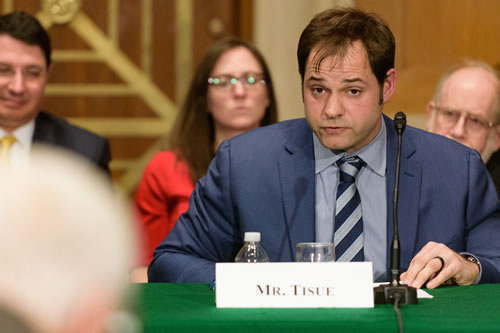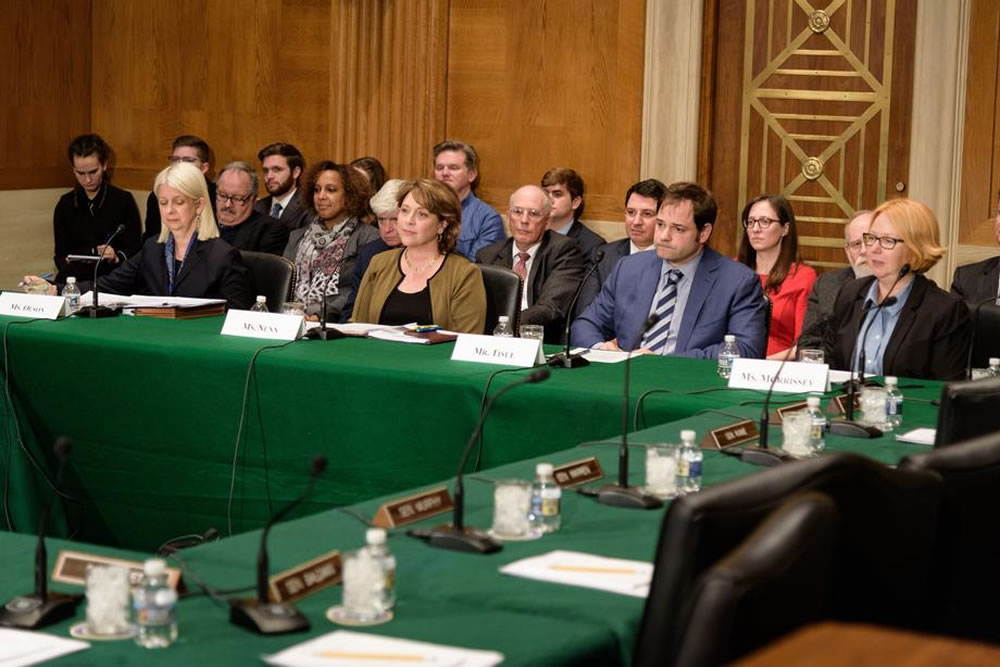If it works for one or ten, it ought to work for 1,000, right?
That’s the philosophy used by Troy Tisue and his team at TAG Resources, LLC, to identify the best employer-sponsored employee retirement benefit plans for the firm’s clients.
He knows that for many employers, going it on their own is too costly. By joining a pool of employers all purchasing the same type of benefit plan, Tisue’s clients have access to much more affordable retirement plans to offer to their employees.
“Just as chocolate and peanut butter go together, employers outsourcing employee retirement benefit plans through a firm such as ours that has – based on the technology we have built in house – the ability to provide solutions that are better, more accountable and more efficient is a win-win,” Tisue said. “That is our endeavor – to provide affordable plans to employers that don’t fit in traditional models.”
Congressional movement in the past year regarding the approval of Open MEP (multiple employer plans) gives Tisue hope that his firm will be able to help even more employers that don’t necessarily fit traditional employee-benefit models.
Previously, the federal Department of Labor (DOL), which oversees the regulations of how an employee-benefit plan is created, has required that employers in a collective pool have a common ownership or business purpose. However, recent proposals would remove this requirement as well as the “one bad apple” rule under which an entire pool of employers was held liable for non-compliant acts by just one member.
In Dec. 2017, Rep. Richard Neal, D-Massachusetts, introduced the Automatic Retirement Plan of 2017, deemed to provide cost-savings for employers and reduce some of that necessary paperwork by allowing the pool to file a common Form 5500, the annual return report of the employee benefit plan required by the DOL. “This is a core proposal that isn’t necessarily making all of the headlines, but it will signal major changes for our clients and prospective new clients,” Tisue said. “It is all about how to get more people in to more plans.”
“This is a core proposal that isn’t necessarily making all of the headlines, but it will signal major changes for our clients and prospective new clients,” Tisue said. “It is all about how to get more people in to more plans.”
That is a noble goal when one considers the current state of retirement planning in America.
According to the Economic Policy Institute, the bulk of American workers ages 50 to 55 have only $8,000 saved for retirement. Workers ages 56 to 61, have an average of $17,000 saved.
It’s not enough.
For most workers, it comes nowhere near the industry adage of having saved five times your annual salary by age 50, and seven times your yearly earnings by age 60, as suggested by Mint.com.
The lack of savings concerns Tisue and is a big part of what motivates him to remain in an industry he landed in somewhat by accident, as he describes.
“It was just with great luck that I got my start in this industry immediately after college,” he said. “I was lucky enough to recognize how much I liked it early on, too.”
Tisue had no experience, but he really liked to talk to people. And he didn’t want to sell life insurance.
So, when he found himself working the back office technical side as an enroller for a third party administrator, he immersed himself in building relationships with the clients and their employees.
“That is where I fell in love with the business,” he said. “It is also where I realized how great the need is for employers to find plans they can afford to offer to their employees.”
No truer words ever spoken especially in light of the fact that up to half of American workers do not have access to a retirement plan at their place of employment.
He views it as a crisis – especially when the 68 million Americans working the Gig Economy are unaccounted for. The flexibility of the “gig” is attractive, he admits, but it also provides zero access to traditional benefits such as a retirement savings plan.
This past February, Tisue testified before the U.S. Senate HELP subcommittee on Primary Health and Retirement Security that an open MEP arrangement “holds substantial promise and can be structured to support contingent workers.”
In the roundtable-style hearing featuring four retirement industry leaders speaking directly with legislative leaders, Tisue suggested two ways he believes an open MEP could provide coverage for the growing number of gig workers.
The first treats each gig worker as a co-sponsor of the open MEP. The company paying the worker sets up an automatic contribution arrangement to pay a portion of the contracted compensation directly to the selected plan.
The second option involves creating an open MEP available to gig workers across a spectrum of industries.
Either way, as Tisue said, “this is not an easy one to solve. But the need could not be more obvious.”
For now, Tisue continues to spread the word regarding the level of service his firm, which specializes in handling all the complicated ins and outs of running an employee benefit plan, can provide.
Document completion is one of the tasks TAG Resources handles with expert ease. “The nastiest part of this industry is that no one wants to compile all of this data,” Tisue said. “But that is where we excel. We take all the payroll data throughout the year and create documents that satisfy the requirements and take the burden off the employer.”
“The nastiest part of this industry is that no one wants to compile all of this data,” Tisue said. “But that is where we excel. We take all the payroll data throughout the year and create documents that satisfy the requirements and take the burden off the employer.”
TAG Resources, based in Knoxville, Tennessee, takes on a fiduciary role on behalf of the employer ensuring full accountability to government regulators.
As an example, Tisue said nothing will trigger an audit – and most likely, costly penalties – as quickly as a late contribution to the employees account on the part of the employer.
It is an illustration of what Tisue deems a “low-functioning” plan: An employer that simply is too overwhelmed with the other aspects of running the business to give the type of attention the details of an employee benefit plan requires.
“The Department of Labor is very active when it comes to assessing fees,” Tisue explained. “As an employer, you don’t want your business to be on their radar regarding any discrepancies with the kind of plan details that are best handled by a professional.”
Tisue said it isn’t uncommon for the DOL to send an employer a three-page letter outlining a series of pieces of information necessary to prove compliance with plan regulations with little notice of the date and exact time an agency representative will be on site to review and receive documentation.
It is a bit scary, he said. This is especially true when the legal ramifications set in, Tisue said.
“It doesn’t take much insight to realize this issue is going to take months to settle and most likely going to require hiring an attorney,” Tisue said. “It also is a costly, time-consuming drag on your employees.”
This is where Tisue's company shines. 'We make this part easy.'
It isn’t a brag; it is just the fact that a firm with the experience of TAG Resources, helps employers to avoid running afoul of trouble with government.
“When you offer a plan to employees, you are on the hook for all that it is – right or wrong. You’ve thrown yourself into a situation where you’re now responsible for other peoples’ money,” Tisue said. “You have to ask yourself: Is that what you got in business to do? Do you have any experience or expertise there? Probably not.”
It’s just one less worry for an employer, Tisue said, adding that it is also one less distraction from what an employer does best: run his or her business.
“For the small business owner – the type of folks we specialize in working with – who is focused on running the business, anything that detracts from that is not a great thing affecting their bottom line,” Tisue said. “We really are the company that serves as the home for misfit toys – all the broken plans come to us because we have developed the plan that accommodates their needs.”
For more information on TAG Resources, LLC, visit: tagresources.com



